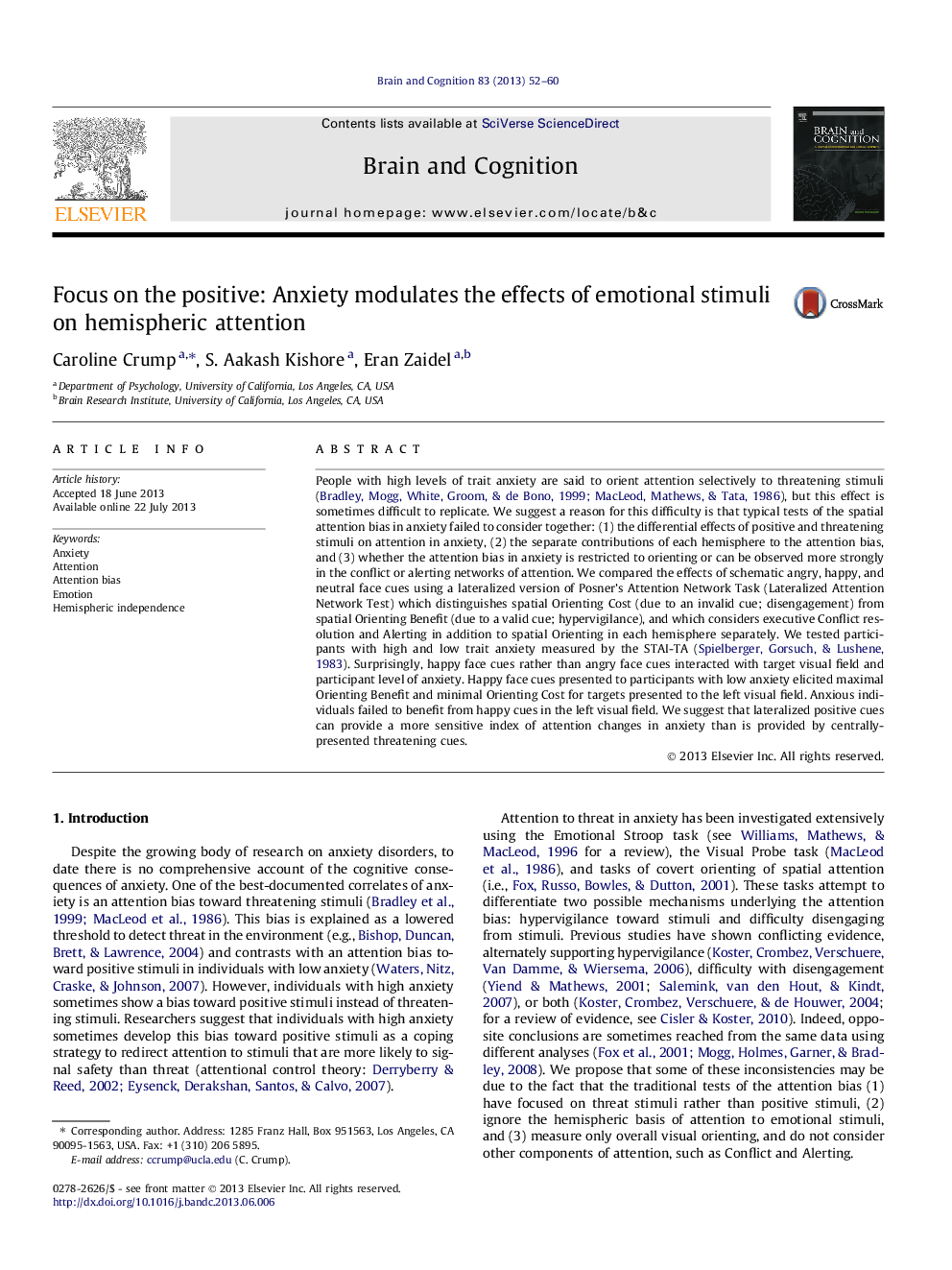| کد مقاله | کد نشریه | سال انتشار | مقاله انگلیسی | نسخه تمام متن |
|---|---|---|---|---|
| 923995 | 921174 | 2013 | 9 صفحه PDF | دانلود رایگان |

• We re-examined attention in anxiety with the Lateralized Attention Network Task.
• We found that anxiety is sensitive to positive cues rather than threat cues in this task.
• We confirmed that the Orienting network is most sensitive to anxiety level.
• These effects are selective to the right cerebral hemisphere.
People with high levels of trait anxiety are said to orient attention selectively to threatening stimuli (Bradley et al., 1999 and MacLeod et al., 1986), but this effect is sometimes difficult to replicate. We suggest a reason for this difficulty is that typical tests of the spatial attention bias in anxiety failed to consider together: (1) the differential effects of positive and threatening stimuli on attention in anxiety, (2) the separate contributions of each hemisphere to the attention bias, and (3) whether the attention bias in anxiety is restricted to orienting or can be observed more strongly in the conflict or alerting networks of attention. We compared the effects of schematic angry, happy, and neutral face cues using a lateralized version of Posner’s Attention Network Task (Lateralized Attention Network Test) which distinguishes spatial Orienting Cost (due to an invalid cue; disengagement) from spatial Orienting Benefit (due to a valid cue; hypervigilance), and which considers executive Conflict resolution and Alerting in addition to spatial Orienting in each hemisphere separately. We tested participants with high and low trait anxiety measured by the STAI-TA (Spielberger, Gorsuch, & Lushene, 1983). Surprisingly, happy face cues rather than angry face cues interacted with target visual field and participant level of anxiety. Happy face cues presented to participants with low anxiety elicited maximal Orienting Benefit and minimal Orienting Cost for targets presented to the left visual field. Anxious individuals failed to benefit from happy cues in the left visual field. We suggest that lateralized positive cues can provide a more sensitive index of attention changes in anxiety than is provided by centrally-presented threatening cues.
Journal: Brain and Cognition - Volume 83, Issue 1, October 2013, Pages 52–60